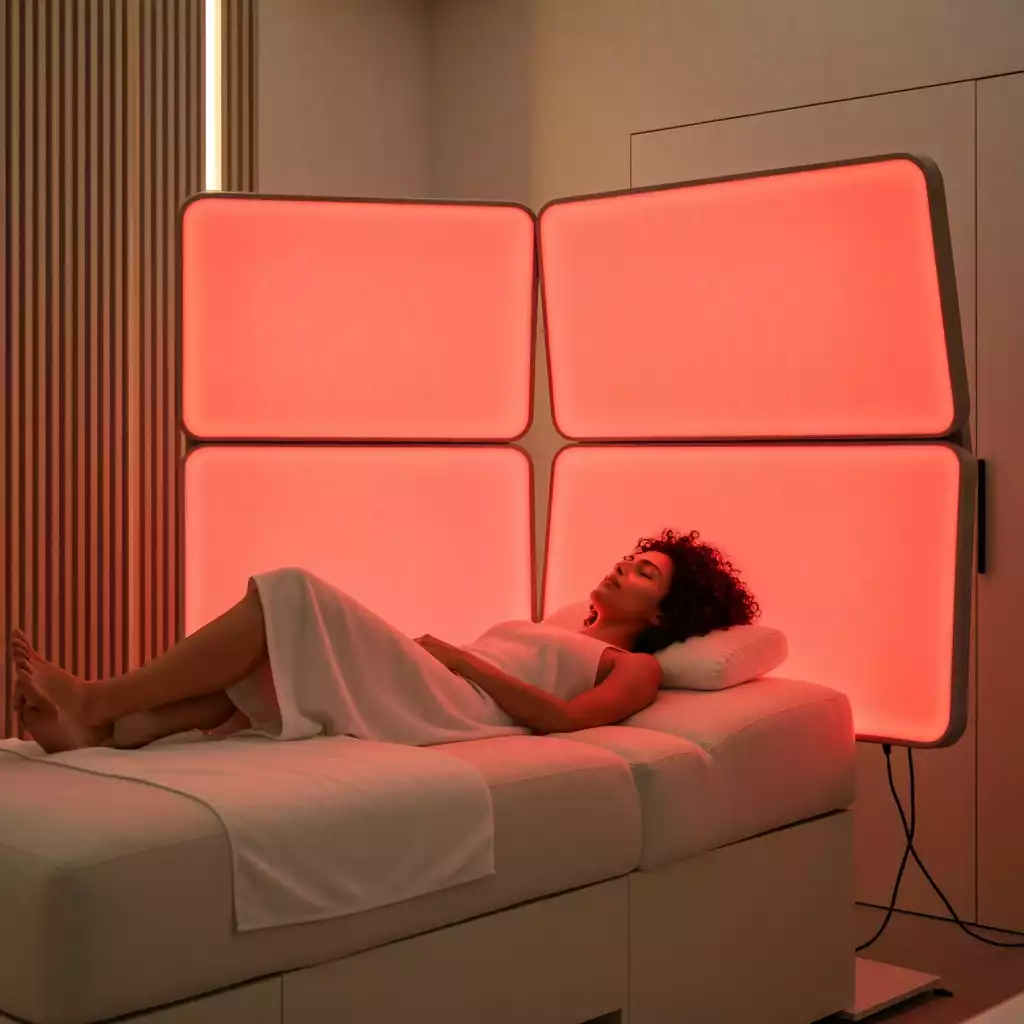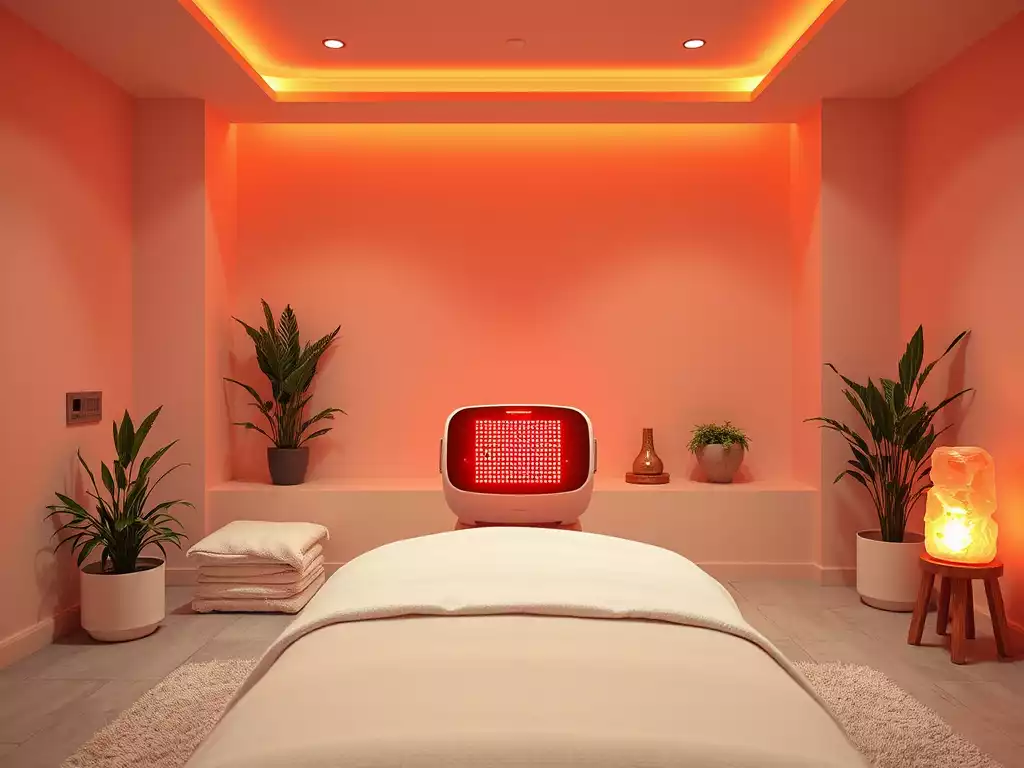As interest in alternative health treatments continues to rise, red light therapy has emerged as a promising option for many. With a unique ability to harness the power of light for healing, it’s creating waves in both wellness and beauty sectors. What might this therapy offer you?
What You Will Learn
- Understanding the mechanism of red light therapy through photobiomodulation.
- Key benefits including improved skin tone, reduced inflammation, and enhanced healing.
- How near-infrared light contributes to deeper tissue repair and pain relief.
- Practical next steps for consumers and business owners interested in red light therapy.
- Comparative insights on how red light therapy stacks up against other treatment modalities.
Understanding the Basics of Red Light Therapy and Its Benefits
Red light therapy (RLT) is a non-invasive treatment that utilizes low wavelengths of red light to promote healing and wellness. It’s exciting to see how this therapy has gained traction in the health and wellness community. But what exactly is red light therapy, and how does it work?
This therapy works on the principle of photobiomodulation, where specific wavelengths of light stimulate cellular processes. Essentially, it energizes the cells, leading to improved function and repair. As someone who has explored various wellness treatments, I can attest to the growing interest in RLT and its numerous benefits.
What Is Red Light Therapy and How Does It Work?
Red light therapy uses specific wavelengths between 600 to 650 nanometers (nm) for red light and 800 to 850 nm for near-infrared light. These wavelengths penetrate the skin, allowing the light to be absorbed by the mitochondria in our cells—essentially, the powerhouses of our cells. This absorption increases ATP (adenosine triphosphate) production, resulting in enhanced energy and accelerated healing.
- Non-invasive treatment option
- Stimulates cellular energy production
- Promotes healing and reduces inflammation
- Can be used for skin care, pain relief, and overall health
Understanding how RLT works can help in appreciating its applications. Whether you’re considering it for skin rejuvenation or pain relief, knowing the science behind it offers valuable insights into its effectiveness. For more detailed information, the Cleveland Clinic provides a comprehensive overview of red light therapy.

Key Benefits of Red Light Therapy for Skin and Overall Health
RLT boasts a variety of benefits that can enhance both skin appearance and overall health. Many people are drawn to this therapy due to its natural approach to wellness. Here are some key advantages:
- Improved skin tone and texture
- Reduced signs of aging
- Enhanced wound healing and tissue repair
- Decreased inflammation and pain relief
From personal experience and testimonials, users report feeling rejuvenated after treatments. It’s no surprise that the versatility of RLT makes it appealing to many looking for non-invasive solutions!
Photobiomodulation: The Science Behind Red Light Therapy
As mentioned earlier, red light therapy operates through photobiomodulation, which is a fascinating process. This mechanism affects cellular functions by influencing various biochemical pathways. When red and near-infrared light interact with our body’s cells, it can lead to:
- Increased collagen production
- Enhanced blood circulation
- Improved cellular metabolism
Understanding these processes not only explains how RLT works but also highlights its potential in various applications, from skincare to pain management. A recent study published in PMC highlights the growing clinical evidence supporting its use.
The Role of Near-Infrared Light in Health Applications
Near-infrared light is crucial in red light therapy, penetrating deeper into the skin than red light alone. This depth allows it to reach muscles and joints, promoting healing in these areas as well. Key benefits include:
- Effective pain relief
- Enhanced muscle recovery
- Improved joint health
Incorporating near-infrared light expands the range of health applications, making RLT a holistic approach to wellness. It’s exciting to think about how these advancements can contribute to overall health! Research from Stanford Medicine offers further insights into the clinical applications of red light therapy for various conditions, including skin and hair health.
We Want to Hear From You!
Have you tried red light therapy before? What benefits did you experience? Share your thoughts below:
Frequently Asked Questions About Red Light Therapy
What is red light therapy (RLT)?
How does RLT work?
What are the main benefits of red light therapy?
What is the role of near-infrared light in RLT?
How does RLT compare to other therapies like cold laser or ultrasound?
Summarizing the Value and Future of Red Light Therapy
As we wrap up our exploration of red light therapy, it’s clear that this innovative treatment offers a wide range of benefits. From enhancing skin health to potentially aiding in pain relief, red light therapy stands as a compelling option for many. The increasing interest from both consumers and professionals speaks volumes about its potential future in wellness and beauty industries.
Here are some key takeaways that summarize the efficacy and opportunities surrounding red light therapy:
- Effective for various skin conditions and promoting healing.
- Supports collagen production, which can lead to youthful skin.
- Growing body of clinical evidence bolstering its use in pain management.
- Accessible options for home use, encouraging wider adoption.
With these benefits in mind, it’s not surprising that many see red light therapy as a valuable investment for health and beauty.

Next Steps for Interested Consumers and Business Owners
If you’re considering diving deeper into the world of red light therapy, whether as a consumer or an aspiring business owner, there are a few steps to take. For consumers, it’s crucial to research products and services that align with your specific health goals. For those looking to start a business, a solid plan that includes market research and understanding your target audience is vital.
- Conduct thorough research on available red light therapy devices.
- Network with professionals in the industry for insights and tips.
- Develop a marketing strategy if you plan to enter the business arena.
- Stay updated on emerging research and trends in the field.
These steps will ensure you make informed decisions, whether you are enhancing your personal wellness or launching a business in this growing market.
Exploring Alternatives: How Red Light Therapy Compares to Other Therapies
While red light therapy is gaining traction, it’s also important to understand how it stacks up against other treatment modalities. For instance, therapies such as cold laser therapy and ultrasound therapy may offer different benefits and applications. By comparing these options, you can identify what works best for your needs.
- Cold Laser Therapy: Often used for pain relief and inflammation, it operates differently, focusing on specific areas.
- Ultrasound Therapy: Used for tissue healing and pain management, often applied in physical therapy settings.
- Traditional Treatments: Medications and surgical options may have their place, but often come with more significant side effects.
By exploring these alternatives, whether you choose red light therapy or another option, you can enhance your overall treatment experience.
Recap of Key Points
- Red light therapy (RLT) uses low wavelengths of light to promote cellular healing through photobiomodulation.
- Key benefits of RLT include improved skin tone, enhanced wound healing, and reduced inflammation and pain.
- Near-infrared light penetrates deeper, aiding in muscle recovery and joint health.
- RLT has a growing body of clinical evidence supporting its effectiveness in various applications, including pain management.
- Consumers should research RLT devices, while aspiring business owners should focus on market research and strategy development.
- Comparing RLT with other therapies, such as cold laser and ultrasound therapy, can help identify the best treatment for individual needs.
